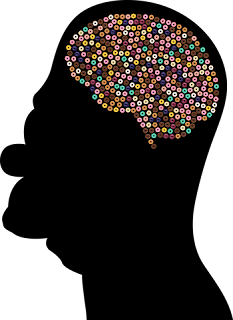Eating disorder have been widely reported and researched since the beginning of the 1980s. Most publicity has been given to anorexia nervosa and bulimia nervosa. These disorders have quite a lot in common, and a person may show symptoms of both.
Anorexia Nervosa
This disorder mainly affects teenage girls and young women, and sometimes boys and young men. Many patients who receive treatment return to their normal weight after two to ten years but may still have difficulty in eating normally. Some patients with anorexia nervosa eventually starve themselves to death.
A person with anorexia nervosa
1. Refuses to eat enough to maintain their age and height.
2. Believes and sees their body to be much bigger than it really is.
3. Has a real and great fear of becoming fat.
4. Develops dry skin, dry hair on their cheeks, back of the neck, arms and legs.
5. In females, menstruation stop and may not return for years. This can lead to osteoporosis and infertility.
6. Has cold feet and hands and possibly serious heart problems.
7. Has constipation.
Patients with anorexia nervosa control their body weight in one of two ways:
1. Eating very little, often no more than 200-300 Kcal per day.
2. Eating food in varying amounts and then getting it out of their body, either by making themselves vomit or by taking laxatives. The food leaves the body before it has been digested properly, and so does not give the body energy and nutrients.
Patients are often very fussy about food but talk a lot about it and like to cook for other people. They often exercise vigorously so that they burn off any energy they have taken from food.
Bulimia Nervosa
Patients with bulimia nervosa have powerful urges to eat very large amount of food, and then often make themselves sick or take laxatives to prevent gaining weight. Eating large amount of foods like this is called binge eating. It may happen several times a week and be alternated with periods of eating almost nothing.
Like anorexic patients, bulimic patients are often afraid of becoming fat and have a distorted image of what shape and size they are.
Bulimic patients often eat in private, hiding their problem away from other people. They may suffer:
1. Kidney problems and swelling of the tissue under the skin.
2. Muscle weakness, constipation and headaches through losing potassium and chloride.
3. sore throat, swollen salivary glands and tiredness.
4. Severe dental problems caused by acid from the stomach coming in contact with the teeth when they vomit. The acid dissolves the tooth enamel.
Causes of Eating Disorder
There is no single cause of eating disorders. Many factors may lead to a person having an eating disorder, including:
1. Emotional shock
2. Fear of growing up
3. An unhappy childhood
4. Stress over a period of time
5. Unhappy relationship with the family
Treatment of Eating Disorder
Treatment for eating disorders is usually long, and it is often not possible to say whether a patient has been cured.
Patients often return to normal weight and eat regularly but tend to slip back into old habits of controlling, what they eat if they come under pressure or are unhappy again. Special clinics dealing only with eating disorders have expert help at hand.
Patient must want to be helped and cooperate with the treatment if it is to work.
Occasionally, a patient is so weak that they are put into hospitals against their will in order to try to save them. They have to stay in bed and are given food regularly in the hope that they will gradually put on weight.
Treatments often includes the whole family, to give them an understanding of the problem. Much patience and understanding is needed if the treatment is to have any chance of success.



0 Comments